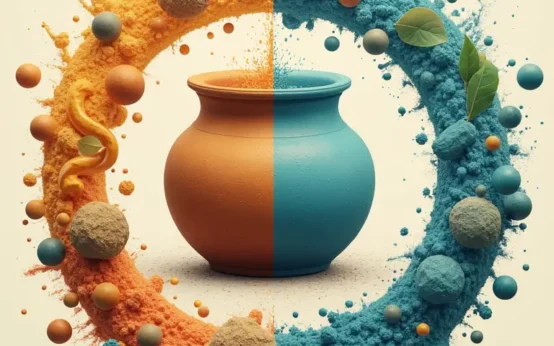We often overlook them. We step on them as gravel, build with them as foundations, admire them as gemstones, but rarely do we consider the incredible stories hidden within the very fabric of minerals. Minerals aren’t just inert substances; they are records of Earth’s history, essential components of life, and play surprisingly intricate roles in technologies we rely on every day. This article aims to peel back the layers and reveal the secret lives of these common, yet extraordinary, materials.
What *Are* Minerals, Exactly?
Before we dive into their fascinating lives, let’s establish what a mineral actually is. It’s more specific than simply “rock.” A mineral must meet five key criteria:
- Naturally Occurring: Formed by natural geological processes, not synthesized in a lab (though synthetic materials can mimic mineral structures).
- Inorganic: Not produced by living organisms or organic matter. (Though minerals can be *in* living things, or formed *from* organic remains, like coral is mineralized calcium carbonate).
- Solid: A stable, definite volume and shape. (Water ice *is* considered a mineral!)
- Definite Chemical Composition: Minerals have a specific chemical formula. Quartz is always SiO2 (silicon dioxide), for example. While some variation is permitted, it’s within defined limits.
- Ordered Atomic Arrangement: The atoms within a mineral are arranged in a repeating, crystalline structure. This internal order is what gives minerals their characteristic properties.
Rocks, on the other hand, are aggregates of one or more minerals. Granite, for example, is a rock composed of quartz, feldspar, and mica minerals.
The Building Blocks of Our Planet
Minerals are fundamental to the Earth’s structure. The mantle, the layer beneath the crust, is primarily composed of minerals like olivine and pyroxene. The crust itself is built from a variety of minerals, including feldspar, quartz, and mica. Even the core, though largely metallic iron, contains mineral phases under immense pressure.
The formation of these minerals is tied to the Earth’s geological processes. Igneous minerals, like those found in volcanic rocks, crystallize from molten magma. Sedimentary minerals, like sandstone’s quartz grains, are formed through the weathering and erosion of existing rocks, then deposited and cemented together. Metamorphic minerals, like garnet and kyanite, are created when existing rocks are transformed by heat and pressure.
Beyond Geology: Minerals and Life
Minerals aren’t just important for the *planet*; they’re essential for *life*. Our bodies require a constant supply of minerals for various functions.
- Calcium: For strong bones and teeth, nerve function, and muscle contraction.
- Iron: A key component of hemoglobin, which carries oxygen in the blood.
- Potassium: Essential for maintaining fluid balance and nerve impulses.
- Sodium: Also crucial for fluid balance and nerve function.
- Zinc: Supports immune function and wound healing.
We obtain these minerals from the food we eat, which in turn gets them from the soil. The soil’s mineral composition is directly linked to the underlying bedrock. Plants absorb these minerals through their roots, and animals (including us) consume the plants or other animals that have consumed them.
Everyday Minerals: You’d Be Surprised!
Let’s look at some common minerals and their surprising applications:
- Quartz (SiO2): Beyond its beauty as a gemstone (amethyst, citrine, rose quartz are all quartz varieties), quartz is the primary component of sand and is crucial in the manufacturing of glass, ceramics, and electronics. The precision required for microchips relies heavily on the purity of quartz crystals.
- Feldspar (e.g., KAlSi3O8, NaAlSi3O8, CaAl2Si2O8): The most abundant mineral group in the Earth’s crust. Used in ceramics, porcelain, and even as a filler in paints and plastics.
- Calcite (CaCO3): Found in limestone and chalk, used in cement production, antacids, and as a dietary calcium supplement. It’s also a major component of seashells and coral.
- Gypsum (CaSO4•2H2O): The main ingredient in drywall (plasterboard), used in construction for interior walls. Also used in fertilizers and as a soil conditioner.
- Halite (NaCl): Commonly known as salt. Essential for human and animal life, used in food preservation, and a raw material for the chemical industry.
- Hematite (Fe2O3): A major iron ore, crucial for steel production, and historically used as a pigment.
- Galena (PbS): The primary ore of lead, used in batteries, radiation shielding, and historically in paints and plumbing (though lead use is now heavily restricted due to its toxicity).
- Kaolinite (Al2Si2O5(OH)4): A clay mineral used in ceramics, paper production, and as a component of cosmetics and pharmaceuticals.
Minerals and Technology: A High-Tech Connection
Our modern technological world is utterly dependent on minerals. Consider these examples:
- Smartphones: Contain a vast array of minerals, including gold, silver, copper, tungsten, tantalum, and rare earth elements. These minerals are used in the circuits, batteries, screens, and other components.
- Electric Vehicles: Require lithium, cobalt, nickel, and manganese for their batteries.
- Wind Turbines and Solar Panels: Utilize rare earth elements and other minerals for efficient energy generation.
- Medical Imaging: Barium sulfate is used as a contrast agent in X-rays and CT scans.
The demand for these minerals is constantly increasing, leading to challenges in sustainable sourcing and responsible mining practices. The geopolitics of mineral resources are becoming increasingly important.
The Hidden Language of Minerals: Identifying Them
Geologists and mineralogists use a variety of properties to identify minerals. These include:
- Color: Often the first observation, but can be misleading as some minerals exhibit pleochroism (different colors depending on the viewing angle) or are found in multiple colors due to impurities.
- Streak: The color of the mineral in powdered form. More reliable than color.
- Luster: How the mineral reflects light (metallic, glassy, pearly, etc.).
- Hardness: Resistance to scratching, measured on the Mohs Hardness Scale (talc = 1, diamond = 10).
- Cleavage and Fracture: How the mineral breaks. Cleavage occurs along specific planes of weakness, while fracture is irregular.
- Specific Gravity: The density of the mineral compared to water.
- Crystal Form: The characteristic shape of the mineral crystals.
These properties are often used in combination to accurately identify a mineral. A simple scratch test, for example, can quickly rule out certain possibilities.
Mineralogy and the History of Science
The study of minerals, mineralogy, has a rich history intertwined with the development of other scientific disciplines. Early civilizations used minerals for tools, ornamentation, and medicinal purposes. The ancient Egyptians used malachite and azurite as pigments, and lapis lazuli for jewelry. The Greeks and Romans developed theories about the formation of minerals, though these were often based on philosophical rather than scientific principles.
The Renaissance saw a renewed interest in natural history, and mineralogy began to develop as a more systematic science. The 18th and 19th centuries witnessed significant advances in mineral classification and the understanding of their chemical composition and crystal structure. The development of X-ray diffraction in the 20th century revolutionized mineralogy, allowing scientists to determine the atomic arrangement within minerals with unprecedented precision. This is also where the connection to the geometry that underlies everything becomes apparent – crystal structures are fundamentally mathematical.
The Allure of Gemstones: Minerals as Art
Certain minerals, due to their beauty, rarity, and durability, are prized as gemstones. Diamonds, rubies, sapphires, and emeralds are among the most well-known. The value of a gemstone is determined by the “Four Cs”: Carat (weight), Cut (quality of shaping), Clarity (absence of flaws), and Color. The creation of these gems often involves extreme geological conditions, adding to their mystique. The history of gemstones is often interwoven with myths, legends, and political intrigue – a fascinating intersection of geology and culture. You can see how this fascination with the unexplained extends to the night sky, explored in celestial oddities and unexplained phenomena.
Mineral Hoaxes and Misconceptions
The world of minerals isn’t immune to deception. Throughout history, there have been instances of mineral hoaxes, where fake gemstones or altered specimens have been presented as genuine. Sometimes these were deliberate attempts to defraud, while other times they were based on misunderstandings or wishful thinking. Like many historical narratives, the story of minerals has also been subject to historical hoaxes and misrepresentations. The art of identifying genuine specimens often relies on careful observation and expert knowledge.
The Science of Color in Minerals
The vibrant colors of many minerals are a result of their chemical composition and the way they interact with light. Trace elements, even in small amounts, can dramatically alter a mineral’s color. For example, the pink color of rose quartz is due to trace amounts of titanium, iron, or manganese. The brilliant blue of lapis lazuli comes from sulfur. The study of color in minerals is a fascinating field that connects mineralogy with physics and chemistry. It also provides a beautiful example of the unexpected science of color.
Minerals and Place Names: A Hidden History
The presence of certain minerals has often influenced the naming of towns and geographic features. Gold Rush towns, for example, frequently include names like “Gold Hill” or “Gold Creek.” Regions rich in iron ore may have names related to iron or steel. Even seemingly unrelated place names can sometimes have a mineralogical origin. The history embedded in these names is often overlooked, but it provides a glimpse into the economic and cultural significance of minerals in a particular area. Similar to how untold stories are hidden in street names, minerals often leave their mark on the landscape and its history.
Resources for Further Exploration
Want to learn more about minerals? Here are some helpful resources:
- Mindat.org: A comprehensive online database of minerals.
- Geological Society of America: Provides information on geology and mineralogy.
- Local Gem and Mineral Clubs: A great way to connect with other enthusiasts and learn from experts.
Minerals are far more than just pretty rocks. They are the building blocks of our planet, essential for life, and integral to our technological world. By understanding their secret lives, we gain a deeper appreciation for the Earth’s history and our place within it.


 The Unexpectedly Consistent Science of Soapmaking: From Ancient Recipes to Modern Chemistry
The Unexpectedly Consistent Science of Soapmaking: From Ancient Recipes to Modern Chemistry  The Curious Science of Firefly Bioluminescence: Decoding Nature’s Tiny Lights
The Curious Science of Firefly Bioluminescence: Decoding Nature’s Tiny Lights  The Curious Physics of Bubbles: More Than Just Soap & Air
The Curious Physics of Bubbles: More Than Just Soap & Air  Color Me Curious: The Surprising Science of Pigments Throughout History
Color Me Curious: The Surprising Science of Pigments Throughout History  The Unexpected Physics of Play: How Toys Teach Us About the Universe
The Unexpected Physics of Play: How Toys Teach Us About the Universe